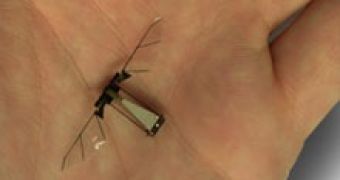Well not really, because it's still cold outside. But just wait until summer, you'll see then; there will be flies and fly-spies all over the place, you won't be able to make the difference! Just kidding! Well, it seems that science fiction has given some 'mad' scientists new ideas, not that cybernetic implants would be something out of the ordinary our days. Nonetheless, beetles, flies, rats or even sharks could quickly become the next generation of spies running around Earth, collecting intelligence without you even realizing it.
I would say to watch out whenever a fly lands next to you in the middle of a very important conversation, but somebody already said it, so... Anyway, we've seen the first human cyborg some years ago, scientists think it's time to move one to more serious things, as brain implants for example. The disguise may be an important factor when collecting intelligence in enemy territory, however we may be able to exploit other more valuable attributes such as a powerful sense of smell, for example.
Unlike some of the borgs we've seen throughout movies, spy borgs would have to have all the cybernetic implants inside the body of the creature in order to conceal its true identity. The main investor in this technology? You've guessed it, the United States military.
Animals can be easily trained to detect particular scents, such as explosives or other illegal substances. Such an animal, a rat for example, could theoretically be controlled with the help of electrodes implanted into their brains, while transmitting images from their location with the help of a small camera on their backs. Nonetheless, rats are not at all ideal for spying operations. In fact, how often does one see rats in a lifetime, especially one with a camera on its back following your every move?
Thus, we get to insects. The U.S. Defense Advanced Research Projects Agency (DARPA) says that insects would be ideal for such spying operations. Electrodes could be easily planted into the small brain of an insect during the pupa stage, after which the cybernetic implants would slowly start to be assimilated and integrated into the biological structure. DARPA wants to create an insect-flying cyborg that would be able to fly as long as 90 meters towards its target, before being returned to where it has started. Pigeons and sharks are also on the list of DARPA scientists.

 14 DAY TRIAL //
14 DAY TRIAL //